FITNESS TIPS FOR FALL & WINTER

MEDICAL CARE SHOULDN’T BE A PRIVILEGE FOR SENIORS

FITNESS TIPS FOR FALL & WINTER

MEDICAL CARE SHOULDN’T BE A PRIVILEGE FOR SENIORS
• Manual Physical Therapy
• Manipulation based therapy
• Dry needling
• Cupping
• Individualized exercise programs
• Sports and injury prevention programs
• Vestibular rehabilitation
• Balance and fall prevention programs
• Pre- and Post-Operative therapy
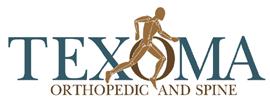
At Texoma Orthopedic and Spine, we are dedicated to providing our patients with the highest quality treatment of Orthopedic injuries and disorders for patients at all stages of life.
Our physicians, Brian T. Rose, MD and Raymond Delpak, DPM, believe in improving quality of life by providing their patients with education as well as topnotch surgical, non-surgical, diagnostic and therapeutic treatment options.
We provide a full range of surgical and non-surgical treatment options for a variety of orthopedic conditions, including osteoarthritis of the joints, sports injuries and fractures of the upper and lower extremities, as well as neck and back pain.
Texoma Orthopedic and Spine has on-staff therapists to make sure your doctor is in close communication regarding your therapy during your rehabilitation process.

Dr. Raymond Delpak, DPM, AACFAS FOOT AND ANKLE SURGERY
Surgical Services:
• Foot and Ankle Trauma and Reconstruction
• Fracture repair
• Flat Foot Reconstruction
• Total Ankle Replacements
• Bunion Repair
• Hammertoe Repair
• Joint replacement in small joints
• Charcot reconstruction
• Foot and Ankle arthritic conditions
• Plantar fasciitis
• Achilles Tendon Repair

Brian T. Rose, MD, FAAOS
ORTHOPEDIC SURGERY OF THE SPINE
Surgical Services:
• Spinal Fusion
• Kyphoplasty
• Cervical Disk Replacement
• Microdiskectomy
• Spinal Decompression
• Interlaminar Stabilization


Not all Regenerative Medicine Injections are the Same. Regenerative therapies are a spectrum of cutting edge therapeutic techniques used to naturally treat and heal the cause of a painful condition rather than masking the symptom. Regenerative therapies stimulate and accelerate your own body’s natural ability to heal itself. Two of the most effective Regenerative therapies include stem cell and platelet rich plasma injections.
Stem Cells are “undifferentiated” cells, which allow them to develop into another type of cell that is required to repair or replace damaged tissue.
Stem cell therapy can repair tissues that are too damaged to heal on their own. Stem cells can stimulate the formation of cartilage, tendon, ligaments, bone and fibrous connective tissues.

ROBERT


SREENADHA VATTAM,
PLATELET RICH PLASMA
Platelet rich plasma (PRP) therapy utilizes platelets taken from the patient’s own blood to rebuild damaged tendons or cartilage.
As a result, the damaged tissue begins to heal. PRP has been successful in not only relieving pain, but also in jump-starting the healing process.
Injuries and conditions commonly treated by regenerative therapy procedures include:
• Back & Neck Pain
• Golfer’s Elbow
• Osteoarthritis of the Knee, Hip, & Shoulder
• Tennis Elbow
• Joint Injuries
• Ligament, Cartilage, & Tendon Injuries
THE INJECTION PROCEDURE
Platelet rich plasma therapy and stem cell injections are done at our office and take about an hour. Patients return home the same day and are often able to work the following day.
Our providers have years of experience in minimally invasive procedures with additional training in regenerative injection techniques. The entire staff is dedicated to providing you with the best possible experience.
Schedule an appointment with one of our providers to determine if one of these state of the art procedures could be right for you.
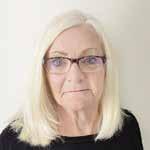
HELENE

For the first speech he ever gave as mayor of Sherman, David Plyler looked out at a crowd during a Martin Luther King Jr. event at Austin College and referenced the saying, “A rising tide lifts all boats.”
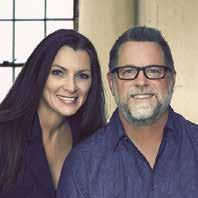
Since then, he’s gone about doing just that. In this issue, we catch up with Mayor Plyler to find out what he’s done to rise the tide in Sherman. Turn to page 8 to read about how he’s helped to construct a prosperous future for the city and lifted the flood gates of opportunity and growth for the city he’s called home since birth.
With that in mind, we suppose you could call this our community issue, as we also catch up with Kevin Couch. He’s running for Sherman City Council. You might not know that if he wins, this wouldn’t be the first time he’s held a council seat. The first time he served, Couch was 150 pounds heavier and only 26. Now, seven years later, he’s lighter and possesses far more real world experience than before.
Check out his Q&A on page 17 to read what Couch’s priorities are this time around. Hint: revitalization and repealing taxes are high on his list.
Switching gears from local politics, we do a 180 and jump into entertainment by shining the spotlight on entertainer Jennifer Lopez. She’s had quite a year, but doesn’t she always? We touch base with this superstar and find out what keeps her going and motivates her to be the best she can be on page 24.
As always, there’s more. Dive in and enjoy!
Be well!

NOVEMBER/DECEMBER
PRESIDENT
ACCOUNTS
ADVERTISING & SALES
TEXAS: Denton County, Dallas County, Collin County
TEXAS & OKLAHOMA: Texoma Area
WRITE TO US:
Tell us who you would like to see featured on the cover, or what subjects you would like covered in upcoming editions of LIVING WELL MAGAZINE at info@livingwellmag.com
SUBSCRIPTIONS & CUSTOMER INQUIRIES
Houstons of Dallas Publishing, Inc. 102 E. Broadway, #901 Prosper, TX 75078
www.LivingWellmag.com Phone: (214) 507-1000 Fax: (855) 248-2132
information on a host of topics relevant to their evolving life. From cutting edge medical news and procedures to top-tier
legal and lifestyle information. Connecting readers to leading medical and business professionals in their community in Texas and Oklahoma.
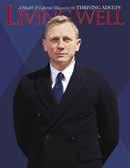




When you’re diagnosed with breast cancer, you need comprehensive care from renowned physicians, advanced treatment options, leading edge technology, and clinical trials. But you also need to keep being Mom. To be front row at every soccer game and gymnastics meet. To be home for family game night. With more than 210 locations across the state, Texas Oncology provides expert care and keeps you close to family and friends. Because you shouldn’t have to choose.











Texas Oncology opened a new comprehensive cancer center in Denison in June, combining both Sherman and Denison locations to offer medical oncology, radiation therapy, and hematology services—all at one location. Located at 5125 Texoma Medical Center Dr., Suite 100, Texas Oncology–Denison Cancer Center, provides patients with access to cancer prevention and screenings, genetic risk evaluation and testing, and research and clinical trials.
“For nearly three decades, Texas Oncology has provided leading-edge cancer care to patients in the Texoma region,” said Steven Paulson, M.D., president and chairman of the board of Texas Oncology. “The new Texas Oncology–Denison Cancer Center highlights our commitment to ensuring that cancer patients across North Texas not only receive high-quality, comprehensive cancer care, but that they have access to innovative therapies and groundbreaking research.”
We are proud to serve the patients of this region and look forward to strengthening our relationships with the community for decades to come.
In addition to providing cancer care, the new 26,000-square-foot facility includes an on-site pharmacy and in-house laboratory. Other support services offered at Texas Oncology–Denison Cancer Center include financial counseling and support groups.
“Texas Oncology–Denison Cancer Center provides patients in the Texoma community with enhanced access to care in a convenient, comfortable setting with the same team of trusted physicians who have always cared for the patients of Grayson County,” said Tammy Roque, M.D., medical oncologist at Texas Oncology–Denison Cancer Center. “We are proud to serve the patients of this region and look forward to strengthening our relationships with the community for decades to come.”
For more information or to schedule an appointment, visit TexasOncology.com/Denison.
hen Daniel Craig was cast as the world’s most famous spy in 2005, most fans instantly took umbrage. A little-known British indie actor at the time, the 37 year old was everything the iconic James Bond was considered not—short, brooding, skinny, blonde, uncharismatic—and most decidedly not Sean Connery, the actor to whom all James Bonds are compared.
Outraged diehard Bond fans set up websites to voice their disapproval—danielcraigisnotbond.com, bondnotblond.com. The press was equally unrelenting with headlines like the Daily Mirror’s “The Name’s Bland—James Bland.” Talk of a 007 boycott intensified when Craig arrived by speedboat (wearing a life jacket, of all things) at the London press conference unveiling him as the new Bond.
Fans proclaimed that Bond would never be such a wuss as to don a life jacket, nor would he ever be anything but a brunette. Among the biting online comments: “Bring back Pierce! Daniel looks like a villain in a Bond movie that gets killed by 007 in the opening sequence.” “I’m sure a blonde could play James Bond, but not someone who’s so ugly and uncharismatic as Daniel Craig.”
His previous film credits did nothing to bolster his “super” spy cred—Road to Perdition Layer Cake and Munich, to name a few. Not to mention the little-seen film, The Mother, in which he plays a carpenter who starts sleeping with a woman in her 60s.
Craig also wasn’t especially keen on the 007 role at first. He told GQ, “It was genuinely like, my life is going to get F***ed if I do this.” He didn’t want to play what he perceived as the campy Pierce Brosnan version of Bond or be saddled with a hopelessly formulaic storyline. And, he realized that once he became the iconic spy there’d be no going back to his under the radar existence. Reading the script for Casino Royale changed the actor’s mind.
Five Bond films later, it’s hard to see anyone besides Craig inhabiting the role. His darker, tougher 007 portrayal has redefined the series and crafted it to be more modern and not as sexist and misogynistic as earlier incarnations.
“In 2005, 2006,” he told The Independent’s Paul Whitington, “all the social media stuff was still just taking off, and I wasn’t used to using it, thank God. I still don’t do social media, and as much as there are lots of good things about it, it is a place for hate and I can’t imagine how one would cope. All of that is a pressure, but I myself was like, you’ve just got to get on with it, get on with the work and do your best.”
And get to work Craig did. His first outing as 007 in Casino Royale necessitated he be well toned and ready for action, something Craig was decidedly not when he showed up for his initial day of training.

AT LEAST NOW AT 60 I CAN SAY: ‘I WAS BOND. NOW BUY ME A DRINK.’
“ ”
“Yes. I turned up with a bacon buttie and a rollie. That’s very true. Those were the days,” he told Whitington.
The intense physical training paid off handsomely, as evidenced when Craig emerged from the sea in a pair of swim trucks, the light glistening off his sculpted physique, in Casino Royale
The training also gave Craig the physicality to do a majority of the stunts and fight scenes, something the actors who’ve played Bond in the past have rarely done. “Nobody told me it was OK if I didn’t do all that, so I just went OK, I’ve got to do it. And I think possibly I made a rod for my own back really, because I started doing it and the stunt co-ordinator Gary Powell was like ‘Oh great, you can do it, well do this then’ and I sort of ended up doing loads.”
“He gets his hands very dirty,” Powell told the Guardian in 2008. “Daniel puts the work in, even if it’s something he’s not keen on.” According to Powell, Craig is not fond of heights, but in Quantum of Solace, he jumped out of a three-story window onto a moving bus. Doing his own stunts has led to numerous on-set injuries including Craig’s two front teeth being smashed out, a separated shoulder, an ankle injury, and losing the tip of a finger.
“It wasn’t as extreme as all that. I lost the pad,” he told Playboy magazine at the time. “I was bleeding a lot. I had to get it cauterized. Filming stopped and everybody went, ‘Oh my God! He sliced the end of his finger off!’ They went looking for it, but couldn’t find it.”
After five Bond movies, Craig is ready to pursue a more quiet sort of life with his wife, actress Rachel Weisz. With No Time to Die doing well in the theaters, the 53-year-old Craig has once again proved he’s a formidable 007, albeit one who’s a little gray around the edges and a bit less flexible. “You get tighter and tighter,” Craig told GQ’s Sam Knight. “And then you just don’t bounce.”
Craig won’t stray far from the public eye, however. According to People magazine, he’s the highest paid actor of 2021, taking in over $100 million due to a record breaking deal with Netflix to star in two sequels to the comedic mystery hit Knives Out
He knew immediately that he had to make time for Knives Out, in between production delays of No Time to Die “I don’t get to play parts like this very often,” the actor explained of his role as Benoit Blanc in an interview with the South China Morning Post “The satisfaction of watching the film with an audience and them laughing at the same gags I laughed at when I first read it. There’s such joy and satisfaction to that.”
In the 2019 mystery film, which was nominated for three Golden Globes, Craig takes on the role of Blanc with gusto, portraying a detective with a heavy southern drawl and an eccentric approach to solving criminal cases. The sequel recently wrapped and is expected to arrive next year.
It’s a return to a more normal state for Craig, far from the hoopla of playing the world’s most famous spy. “I would just rather keep myself to myself and my home, with my wife and family, I don’t venture out a great deal and I will choose places that I want to go carefully. It’s not that I don’t like fans or appreciate how passionate they are about the films and the industry; they are entirely the ones who keep this industry moving; it’s just that I choose not to be the person who courts publicity or has loads of celebrity friends and is always out for the paparazzi to shoot me in particular hot spots.”
As for the future of Bond, Craig is grateful for the opportunity to inhabit a global icon for the past 15 years. “The idea of regretting not doing this seemed insane to me. Sitting in the corner at a bar at age 60, saying: ‘I could’ve been Bond. Buy me a drink.’ That’s the saddest place I could be. At least now at 60 I can say: ‘I was Bond. Now buy me a drink.”’
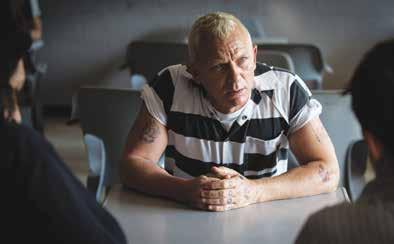

I WAS BLEEDING A LOT. I HAD TO GET IT CAUTERIZED. FILMING STOPPED AND EVERYBODY WENT, ‘OH MY GOD! HE SLICED THE END OF HIS FINGER OFF!’
“ ”




Our story begins with Paul, a 78-year-old divorced man who passed away in late 2013. He had two children: a son named Rip and a daughter named Kelly. Paul told Kelly that he chose her to serve as Executrix in his Will because she was responsible as compared to his son Rip who had an abusive personality and was often unemployed. Rip was hard for everyone to get along with and seemed to reserve his most intense wrath for his sister. Paul’s Will left his estate to his two children in equal shares.
When Paul died, Kelly acted quickly to probate her father’s Will. She hired her father’s long-time general practice attorney, Max, to probate the Will. Max and Paul had been golfing buddies for a long time. Kelly figured that Max drafted the Will so he would be the best choice to probate it. Max had helped Paul with his divorce and had defended him when he was arrested for driving under the influence.
Max got Kelly appointed Independent Executrix before the end of the year. Several creditors unexpectedly filed claims in the estate. Unfortunately, Max didn’t specialize in probate law and so he didn’t know how to handle the creditor’s claims. In fact, there are many general practice attorneys that will accept a probate case, thinking that it’s easy. The progress of probating Paul’s estate slowed to a crawl because Max didn’t know what to do about the creditor’s claims. The problems cascaded because the slow progress angered Rip. He began calling and emailing Kelly and Max daily, sometimes multiple times per day. His communications were very abusive. Rip even filed a large creditor’s claim of his own. Rip’s claim was frivolous but Max didn’t know how to dispose of it. Max had to charge the estate for the time he spent responding to Rip’s emails and talking to Kelly and Rip on the phone so his legal fees began to add up.
Kelly was able to sell her father’s house and land, which brought in enough money to enable Kelly to pay Max’s legal fees and make a large preliminary distribution to herself and Rip. The money didn’t placate Rip one bit and he continued to badger everyone involved. After over two years of ineffective representation, Max withdrew as the
estate’s attorney. This forced Kelly to do what she should have done in the first place: research and find an elder law attorney who had expertise in probate.
Kelly made an appointment with her new elder law attorney and brought him the thick file of documents to review. After reviewing the thick file of documents, the elder law attorney realized that Max had failed to perform several procedures and give several notices required by the law. The requirements that Max had missed were only recently passed by the legislature. Since Max’s general law practice included mostly divorce, personal injury and criminal defense, he didn’t have enough volume in the probate area to justify the time it takes to keep current on all the new laws. The elder law attorney realized that in order to protect Kelly from potential personal liability, the case would have to be delayed even further to give the required notices and allow the required time periods to expire so that known and unknown potential and actual creditors, including Rip, would not be able to file claims against Kelly individually after the estate was closed. This delay infuriated Rip even more. However, the elder law attorney was experienced in dealing with difficult estate beneficiaries and was able to shut down Rip’s abusive communications to his sister.
The delays, frustration, extra expense, and exposure to liability that Kelly experienced could have been avoided if she had hired an elder law attorney instead of her father’s general practice attorney. Probate law is a complicated field. The legislature and the courts are constantly making new laws, adding to the complexity. The sheer volume of all this change is forcing more and more attorneys to choose to specialize or limit their practice.
When Kelly first called her father’s attorney, before telling him who she was or why she was calling, she should have asked him to tell her specifically which two or three areas of the law accounted for the majority of his practice. If his answer didn’t include probate or estate law, she would have been able to deduce that she should hire a different attorney who had expertise in the field of law that she needed.

Brian Nwannunu, MD, MS, is an orthopedic surgeon specializing in hip and knee replacement. He cares for patients at Alpha Orthopedics & Sports Medicine’s offices in Sherman and McKinney, Texas.
Dr. Nwannunu, a native of Dallas, earned his bachelor’s degree in Biology at Morehouse College in Atlanta, Georgia, where he was part of the Morehouse College Honors Program. Upon graduation, he completed his master’s degree in Physiology at Georgetown University in Washington, D.C., with a concentration on complementary and alternative medicine.
Dr. Nwannunu then graduated with his medical degree from Howard University College of Medicine in Washington, D.C., where he was inducted into the Alpha Omega Alpha Honor Medical Society.
Dr. Nwannunu completed his residency in orthopedic surgery at the John Peter Smith Health Network in Fort Worth, Texas, before pursuing additional training with a fellowship in adult reconstruction at Baylor College of Medicine in Houston, Texas. In addition to his clinical training, Dr. Nwannunu enjoys mission work abroad, providing medical care and health education to populations in need.
He is a member of the American Medical Association, National Medical Association, American Academy of Orthopaedic Surgeons and the American Association of Hip and Knee Surgeons.
When not working, Dr. Nwannunu enjoys basketball, weight training, outdoor activities, attending art and music festivals, traveling, world news, and reading.





Brian Rose, MD D. Bruce Ramsey, MD Denison, TX Sherman, TX 903-465-2190
John Pulliam, MD Sherman, TX Paris, TX 903-957-3230 903-893-5177
Gary Bloomgarden, MD Denison, TX 903-416-6460
J. Keith Preston, MD 903-737-9999


Jelsma Or thopedics & Spor ts Medicine
Richard D. Jelsma, MD
Alpha Or thopedics & Spor ts Medicine .................
➠ Duncan L. McKellar, Jr., MD
➠ Charles E. Toulson, MD, MBA
➠ Jon C. Thompson, MD
➠ Brian J. Snow, MD
Pharmacy
➠ Deborah Fisher,
➠ Jon Poe, PT, LAT
ENT Centers of Nor th Texas
➠ Hunter Richmond, MD
➠ Peter Selz, MD
➠ McDonald Arnot, DO
Internal Medicine &
➠ Benarji Tegala, MD
➠ Jeremy Urbanczyk, DO
Digestive
➠ Jermaine G. Clarke, DO, MBA
Digestive
➠ Joseph Kim, MD
➠ Ikram Kureshi, MD





Minimally invasive technology, close to home

A treatment system specifically used for treating painful tumors that have spread to the spine from cancer in other parts of the body is now available at TMC. Orthopedic Spine Surgeon at Texoma Medical Center, Brian Rose, MD, FAAOS, says he has been treating patients for about two years.
The treatment serves a dual purpose. Dr. Rose states, “Radiofrequency ablation enables us to treat tumors using a small incision. Once the tumor is destroyed, we strengthen and stabilize the spine by filling in the affected areas with a cement-like material. The procedure usually takes less than one hour and following a short time in recovery, patients can go home.”
Dr Rose says that the person ’ s pain level is greatly reduced. For older patients with other health conditions, the minimal side effects are a plus. This often a lows the patient to proceed with radiation therapy and/or chemotherapy without severe pain
Enhancing treatment options for patients
The new treatment is an extension of kyphoplasty, a procedure already performed at Texoma Medical Center for patients with spinal pain due to compression fractures that result from osteoporosis “Kyphoplasty is a very similar procedure. The difference is that no ab ation is needed The patient’s vertebrae need support, so we fill any















Voted Top Doc in Dallas County and Collin County. Dr. Toulson is proud to serve local residents and surrounding communities.
Dr. Charles Toulson specializes in:
Robotic Joint Replacement
Total
Partial
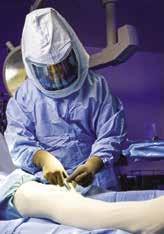













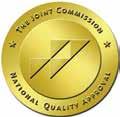
























CENTER FEATURES:
• Chair Yoga
• Adaptive Yoga
• Chair Volleyball
• Treadmills
• Stationary Bikes
• Fitness Classes
• Book Club
• Movie Matinee
• Pool Tournaments
• Art Classes
• ZUMBA (Coming Soon)
And so much more!




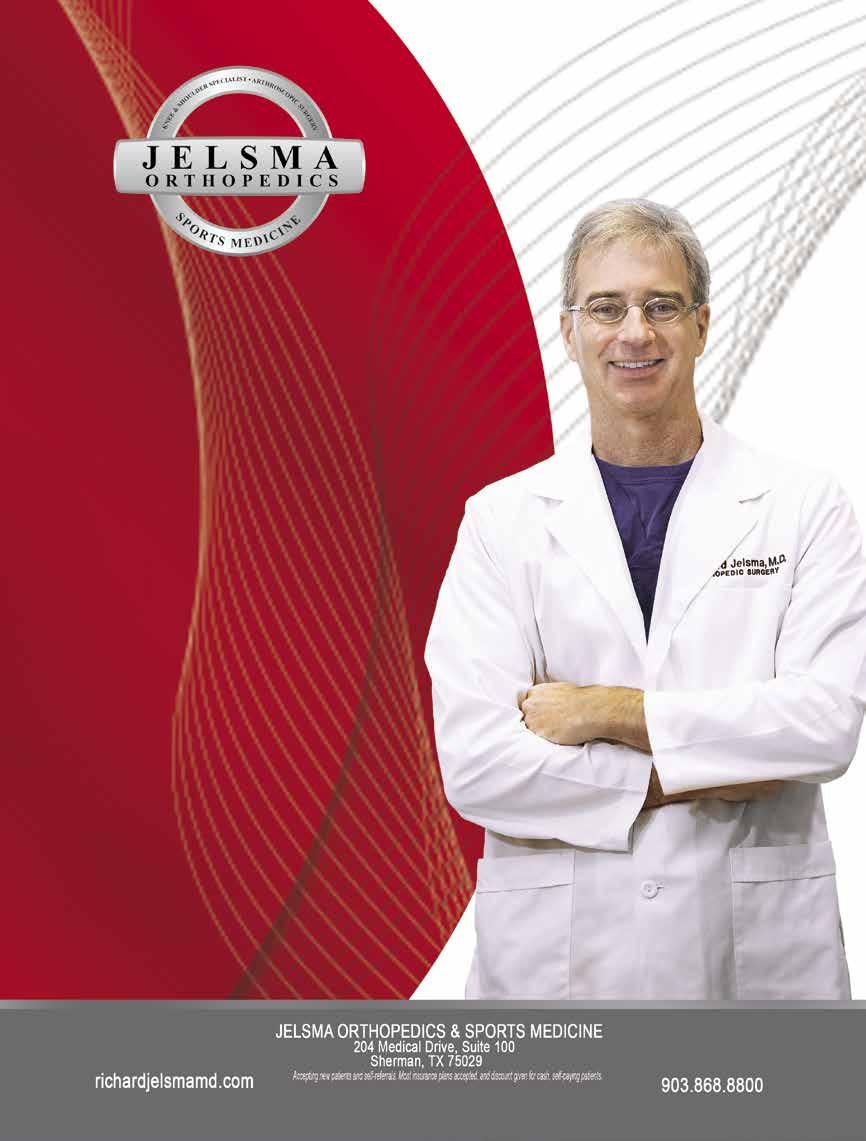
Dr. Richard Jelsma is double board-certified by the American Board of Orthopedic Surgery in Orthopedic Surgery and Sports Medicine.
HIGH QUALITY SURGERY DEMANDS EXPERIENCE
Dr. Jelsma is one of the most experienced surgeons in North Texas having performed:
•Over 3,000 minimally invasive arthroscopic shoulder repairs. Including rotator cuff and labral tears.
•Over 3,000 arthroscopic knee surgeries. Including ACL tears, meniscus tears, and cartilage injuries.
•Over 1,000 minimally invasive knee replacements.
DR. JELSMA’S OFFICE PHILOSOPHY: PERSONAL CARE
He prides himself on seeing all of his patients personally. Each patient is examined, and additional tests may be ordered to determine an accurate diagnosis. Dr. Jelsma then reviews a list of treatment options with the patient in order to make a decision while taking into account their personal goals and lifestyle considerations.
ASSISTING ALL PATIENTS WITH THEIR GENERAL ORTHOPEDIC NEEDS
•Treats all types of musculoskeletal pain, whether you’re an athlete or spectator.
•Addresses both non-surgical and surgical options.
•Dr. Jelsma and his team are here to get you back in life’s game.









When the weather turns colder, days get shorter, and sweaters are pulled back out of the closet, it can be a struggle to keep up healthy habits. During the fall and winter months, health and fitness routines often take a backseat to staying warm and cozy. After a few months of hibernation and holiday indulgences, the pounds, lack of energy, and health consequences set in, reminding us of those long-forgotten fitness goals. It can be frustrating to feel like you’re starting back at square one. Instead of falling into this yearly cycle, read on for ways to avoid the fall and winter fitness slump and to keep focused on staying fit.
This is one of the best ways to stay consistent with your fitness goals. It’s much easier to blow off a workout and curl up with a warm drink and blanket if you’re only accountable to yourself. Finding a partner or a community with similar goals is a great way to keep yourself on track. You can give and receive support, find ways to stay fit together, and remind each other of the benefits of keeping fit. While in-person support is helpful, it isn’t always easy to find. But social media makes it much easier to join like-minded people in a virtual community. Do a quick search on social media sites, and you’ll find fitness groups for all levels and interests. These communities provide various ways to keep you account-

able. They’re a safe place to share struggles and successes, provide moral support to one another, and share ideas or tips.
Another way to increase the odds of staying fit through the colder months is by joining a gym or fitness class. This requires a financial commitment, which may be an excellent external motivator.
Gyms offer many amenities to support fitness goals. These include personal training, a variety of equipment, and often classes you can explore for new ways to stay fit. Some fitness centers even have extras like childcare, rock climbing walls, saunas, and heated pools. Such perks may help get you out the door on colder days. Even many libraries offer free fitness classes.
Maybe braving the cold and dark sounds like too much, or working out with other people isn’t your bliss. If so, there are many ways to get in an effective workout at home. Investing in a home gym is one way to stay active through the colder months. If you have space and money, particularly if other family members want an at-home workout too, purchase the appropriate equipment to fit your needs. It doesn’t need to be elaborate. Just a set of hand weights or a kettlebell can be enough to get you started if you don’t want to commit to large or expensive equipment. However,
sizeable used equipment can often be found for practically nothing on Craigslist and elsewhere online.
You can also find thousands of exercise videos and written plans on the internet, DVDs, through your cable provider, or at your local library. There are also video game systems with fun workouts like the Wii Fit or dancing games. Whatever type of exercise or fitness plan you can think of, there are likely at least a few resources out there so you can do it at home. These include exercises with or without equipment. Many are designed for or take into consideration working out in small spaces or with limited time.
If you’re starting from scratch or lack motivation, find small ways to incorporate healthy fitness habits into your daily routine. For example, take stairs instead of the elevator, park your car farther away in the lot, and go for a walk during lunch.
You can also start by taking an extra 15 minutes before your shower to do some quick exercises. A daily routine could include bodyweight moves like squats, pushups, and planks. These can have a significant impact on your fitness when done consistently.
Regardless of your fitness goals, you can stay on track throughout the colder months if you find what works best to keep you motivated and consistent.
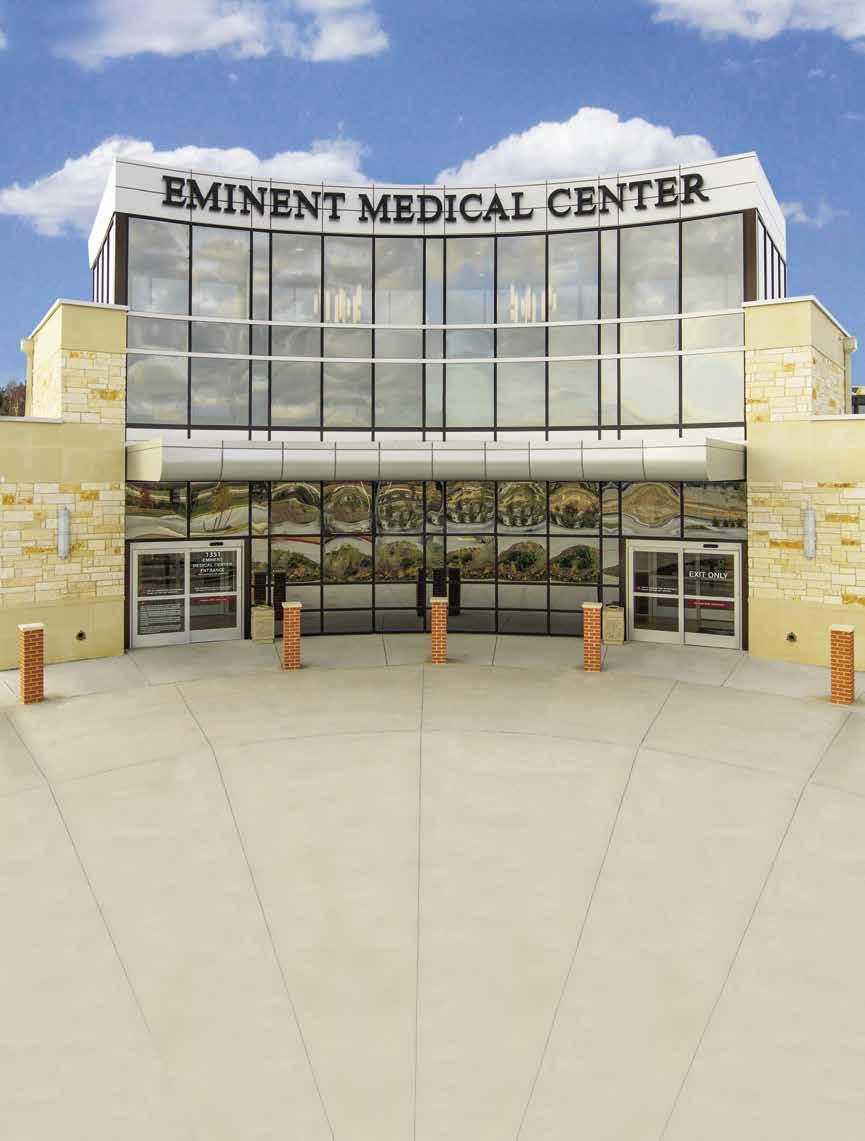
Pain
• Sports Medicine • General Surgery
Spine Surgery • Orthopedic Surgery • Neurosurgery
Minimally Invasive Spine Surgery • Total Joint Surgery
Foot & Ankle Surgery • Hand Surgery
Gynecological Surgery • Plastic Surgery


It’s essential to take care of your feet !
Premier Foot & Ankle specializes in the treatment of all foot and ankle issues patients of all ages may experience. Our dedicated providers are committed to providing patients with quality care and pain relief using cuttingedge technology such as Pulse Activation Treatment to cure heel pain/plantar fasciitis as well as Padnet vascular and Smart Scan nerve testing for diabetics. By for the entire family, we at Premier Foot & Ankle focus on treating both the injured athlete and anyone with foot or ankle injuries.
Premier Foot & Ankle is the leading practice of foot and ankle specialists in the Dallas-Ft. Worth area as evidenced by multiple awards such as the Best of Dallas 2011-2012 and 2015-2020 and the Reader’s Choice Best of Living 2017. As a trusted and dedicated
provider, Premier Foot & Ankle is here to help patients alleviate their foot and ankle pain resulting from various foot disorders and injuries such as sports and diabetic foot care.
To move toward your pain-free lifestyle with an individualized comprehensive treatment plan, visit us today at www.premierfoot.com to schedule your appointment!

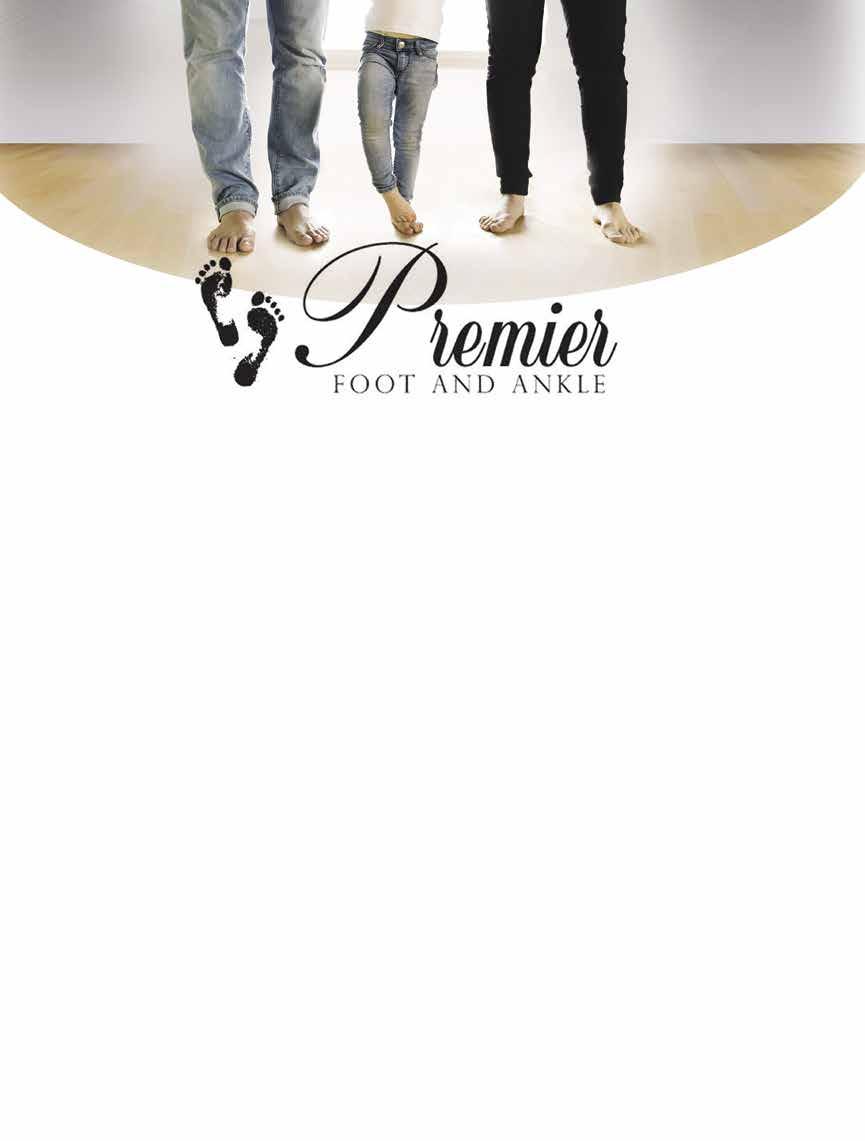
Dear Olivia,
My family and I have concerns about allowing people into our home due to the rising concerns over COVID-19. We have had in-home care to help with the day-to-day needs of our loved one. How can we protect her, but still get her the care that she needs at home?
-Concerned about COVID-19
Dear Concerned about COVID-19, All of us should be concerned about protecting ourselves and those we love from this dangerous virus. As everyone has been hearing, the Delta variant of COVID-19 is more contagious than what we were seeing this time last year. Therefore, everyone should take precautions to protect themselves and those they love from contracting the
 OLIVIA ROGERS
OLIVIA ROGERS
Olivia
virus. The best way to do this is to be fully vaccinated, wear a mask in public, social distance and encourage your social circle to do the same! When it comes to allowing people, including caregivers, into your home, there are safe ways to allow necessary care to be provided while still ensuring the safety of your family.
Always require anyone who enters your home to wear a mask (caregivers should be doing this already), you wear a mask as well if in the same room as the caregiver and know that it is okay to ask if they have been vaccinated. You can also reserve the right to ask the agency to only send fully vaccinated personnel to your home. At the Visiting Nurse Association, our staff are required to be vaccinated in order to protect the health and well-being of those we serve.
~Oliviaand
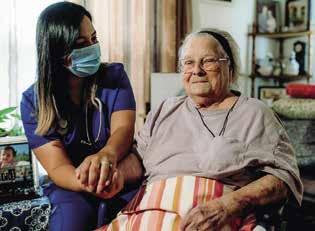
Following the diagnosis of a life-limiting illness, patients and their loved ones have many questions about the best course of action. VNA Care Choices provides supportive care services in the home while continuing treatment with your current physician.


Attorney Deandra M. Grant leads Hamilton Grant’s North, East and Central Texas offices. She is an international speaker on DWI law, science and trial skills. As the author of the annually updated Texas DWI Manual, she is viewed by her peers as being a leader in her field. Deandra understands the science behind alcohol absorption and elimination rates and can use this knowledge to competently defend you.
Deandra formerly was an assistant district attorney. Her tenure as a prosecutor focused on DWI prosecutions which has given her firsthand knowledge on how to counter the prosecutor’s evidence and strategy. Deandra has spent hundreds of hours in training courses and programs related to DWI defense and has completed the certification course to administer standard field sobriety testing (SFST), the same training course taught to police officers nationwide on how to identify drunk drivers during traffic stops. As a certified SFST Instructor, Deandra has taught the course to other attorneys. She’s also completed the coursework on DWI forensic blood and urine testing.

“I have a masters degree in pharmaceutical science and a graduate certificate in forensic toxicology. I am able to take apart evidence in ways a lot of other attorneys are not able to do. The most important part of my job is being the barrier between the government and my client. Standing between them. Making sure their rights are protected.”
–DEANDRA GRANT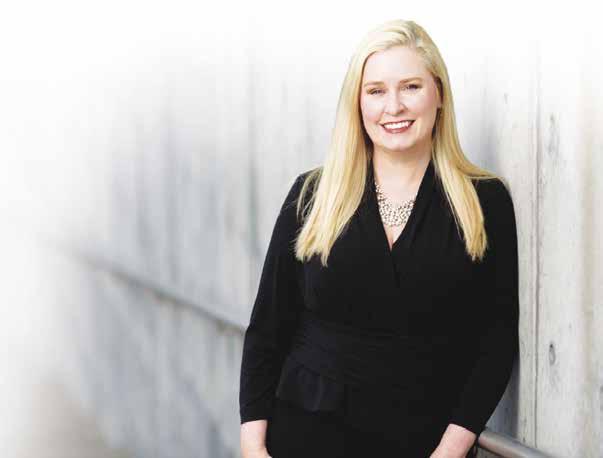
Our second day was eventful at the hospital. Things started to move rapidly. The final straw was when they came to ask for consent for evasive procedures and informed it would be safer if they moved us to ICU so we could have a nurse one on one. His heart is frailer and tired. The lack of sleep, pain and the unknown are starting to show on his face. As I watch I know he is tired, and I will become his fight to live. In his eyes I can see fright, worry, regret and exhaustion. He is begging to just close his eyes and go to sleep until it is over, so he pulls the cover over his head. Today is our wedding anniversary of 24 years. As I reminisce about our marriage it was always this way, I took care of the battles and conflict and he was all jokes and pranks. Our door reminds me of the doors you find at hotels that go around and around and around. Consent forms, doctors for each specialty, nurses, social workers, surgeon team, heart team, LVAD
team. His heart can no longer push fluids to his organs, so now we take the next door in keeping him alive. Feeling stunned, stressed and overwhelmed by it all, it is informed consent time once again––to hear the risk that each procedure brings and its saving qualities. I have insisted he be awake and hear about each procedure and sign his own consent forms. He is definitely not excited at being an informed patient and wants me to do all the paperwork. He just does not want to hear it. He now needs an Intra-Aortic Balloon device; it will be his heart in a machine. Our bridge to keep him alive until he is cleared to have heart surgery. And we sign and wait.
I had no idea how many decisions we would have to make. Knowing what is important makes such a difference on you emotionally and supporting the caregiver is just as critical as patient care.



(Family Features) The holidays, as well as birthdays and other celebrations, are often difficult for anyone who has experienced the death of a loved one, particularly during the first year of adjusting to life without them.
The holiday season may result in a renewed sense of grief, especially as well-intentioned individuals are encouraging those who are grieving to participate in traditional festivities. While there can be joy in being together with family and friends, the holidays can also bring feelings of sadness, loss and emptiness.
For those who find themselves struggling with grief during the holidays and other celebrations, consider these ideas from Remembering a Life, an online resource from the experts at the National Funeral Directors Association.
TALK ABOUT GRIEF
Grief isn’t a linear journey. Ignoring pain and emotions won’t make it go away. Don’t be afraid to talk about grief with others. Confiding in close family and friends can help a grieving person feel heard and understood.
ESTABLISH BOUNDARIES DURING THE HOLIDAYS
Friends and family may encourage a grieving person to participate in the holiday just as they normally would. While these intentions are typically good, it is important for the bereaved to set boundaries and focus on what they want. While grieving, one should openly and honestly discuss wishes with friends and family and clarify what they are comfortable with and have the emotional bandwidth to do.
ACKNOWLEDGE THE LOSS
Families can find ways to honor their loved one’s physical absence during holiday celebrations by incorporating their spirit into celebrations and holiday traditions. Examples of this could be decorating ornaments in ways that are symbolic of a loved one, cooking their favorite meal or making a memorial donation to a favorite charity.
REFLECT ON AND EMBRACE FOND MEMORIES
Memories of a loved one, both from the holidays and other special times, are an important legacy. Rather than ignoring these memories, talk about them with family and friends. It’s OK to laugh and it’s OK to cry. One way to facilitate this activity is with Remembering A Life’s Have the Talk of a Lifetime Conversation Cards, (RememberingALife.com) which can help families share stories and memories about loved ones and themselves. It can make for a meaningful activity during holiday gatherings.
It is important to remember that even though an individual may be grieving, they can still celebrate and enjoy the holidays. Find support and resources for grief during the holidays and other special times of the year at RememberingALife.com.





The rising cost of healthcare is a significant concern for most people. But it’s especially true for seniors who likely will have an increasing need for access to medical services as they age and, at the same time, reduced income because of retirement. Without a significant amount of savings, one injury or illness can lead to devastating medical debt. The Affordable Care Act requires everyone to have some type of insurance. Still, plans can be extremely costly with high out-of-pocket costs and possibly limited benefits or coverage. As a result, the need for more affordable medical care is becoming more apparent. Fortunately, several options are available for discounts or alternatives to traditional ways to pay for necessary health services.
Senior health care is generally provided through private insurers or government programs.
• Medicare is an insurance program through the federal government specifically for those age 65 or older or younger individuals with a disability. The four parts of the program range from free to low-cost and cover different health care needs, including a specific prescription drug plan. Medicare also offers savings programs to help individuals prepare for unexpected healthcare costs not already covered. Extra Help is another Medicare program for low-income and lowresource seniors who qualify for additional financial support.
• SHIP (State Health Insurance Assistance Programs) is a resource for anyone who qualifies for Medicare. It offers individuals assistance and helpful information about making health insurance decisions.
• Medicaid is a state program with some federal assistance for significantly low-income individuals. It can also be combined with Medicare.
• The Program of All-Inclusive Care for the Elderly (PACE) is a comprehensive medical and social service through the states. It provides coordinated care by a team of professionals for seniors age 55 and up who are eligible for both Medicare and Medicaid.
• Private insurance can be purchased directly from health insurance providers, the Health Insurance Marketplace at healthcare.gov, or through an individual’s current employer. Private insurance has a wide range of costs and benefits depending on the provider, tier, deductible, and possibly subsidies. In addition, insurance companies may deny membership or require increased premiums for individuals because of age or pre-existing conditions. Some major providers include UnitedHealth, Kaiser, Anthem, Cigna, Humana, and BlueCross.
• Medigap is supplemental health insurance. It can be purchased through private insurance to fill the gaps in coverage for individuals with a Medicare plan, including Part A and Part B.
PROVIDER AND OTHER DISCOUNTS
Other programs, as well as individual providers, offer discount programs for eligible individuals, including seniors.
• BenefitsCheckUp is a tool from the National Council on Aging to help match people with benefit programs in their area.
• The National Council on Aging also has an AgeWell Planner with a section on Health and Wellness Guidance. In addition, it may have resources available and a tool to search by state for assistance programs and benefits.
• PhRMA has a Medicine Assistance Tool to help patients and caregivers find more information about health care and insurance along with resources to reduce out-of-pocket medical costs.
• The Donated Dental Services program offers free dental care to seniors and other vulnerable populations who qualify.
AARP Money Map is a more general free financial support tool to help you manage your expenses and any debt. You don’t have to be an AARP member to use this tool. It sets you up with resources and a plan for your finances to support you in managing healthcare costs. The Money Map tool can also assist in preparing for any unexpected medical expenses that may arise or help you recover from any that have already occurred.
CareCredit is a credit card specifically for healthcare use that helps with out-of-pocket costs for individuals, families, and even pets. It works for health and wellness purchases, including cosmetic care, dentistry, vision care, and more, that aren’t covered by your insurance. There are more than 225,000 providers at locations around the country who accept CareCredit. It also offers several financing options with shorter and longer terms and opportunities for no-interest loans or reduced APR with fixed monthly payments.
Health care sharing programs consist of organizations with members who contribute and essentially share the burden of medical costs. Like insurance, you have a monthly contribution and an unshared annual amount that functions like a deductible. These programs are often offered through religious organizations. They may have specific lifestyle requirements that meet the health and morality of the shared beliefs. Although the programs are not health insurance, cost-sharing programs count under the Affordable Care Act. Therefore, they can cost much less than insurance for participants. Each organization may have different membership rules, approaches for pre-existing conditions or those related to lifestyle choices, and types of benefits covered.
Whether ongoing or short-term, prescription drug costs can add up and become prohibitively expensive, even with insurance. As a result, many people who rely on prescriptions are forced to go without or cannot take them as prescribed because of increasing prices. Various programs and organizations offer discount cards specifically to help get necessary prescription drugs at a more affordable price. For example, AARP offers a Prescription Discount Card for its members and even a general card that’s accessible to non-members on its website. GoodRx, SingleCare, and WellRx are some of the other well-known companies widely accepted in pharmacies. Many of these are free to join but may also offer an optional membership for premium access.

When you need top quality parts and ser vice, look to Plano Power Equipment. To keep your equipment in top shape, you can count on Plano Power Equipment’s retail parts sales and ser vicing of Toro-brand equipment using genuine Toro® parts.

POWERFUL PERFORMANCE AND LIGHTWEIGHT AGILITY!
1414 N. Central Expy. Plano, TX 75074 (972) 423-5220
21” Personal Pace® Honda Engine Super Recycler® Mower (20382)
• Personal Pace® self-propel automatically adjusts to your walk speed.
• Powered with a Honda® GCV 160cc OHC engine
• Covered by a 5-Year Guarantee-to-Start engine warranty plus a 5-Year Full Coverage Warranty.
• Quick Stow Storage Handle allows you to store your mower in tight spaces.
30” Personal Pace® TimeMaster® Mower (21199)
• Time Saver
– Finish jobs faster with the 30” deck.
• No Restarts! Leave the mower without restarts with Spin-Stop™ Blade Stop Pick Your Pace–You control the mowing speed with Personal Pace®.
• Big Power
– You’ll enjoy great power and performance from 10 00 ft.-lb. Gross Torque Briggs & Stratton® 223cc OHV engine.

GET THE JOB DONE FASTER AND STAR T YOUR WEEKEND!
MOW LIKE THE PROS!
EXPERIENCE THE RESIDENTIAL ZERO -TURN RIDING MOWER WITH COMMERCIAL MOWER FEATURES.
50” TimeCutter®

• Mow around obstacles easily with zero-turn radius steering and dependable dual hydrostatus transmissions.
• Enjoy a smoother ride with Toro’s long-lasting durable, heavy-duty 10-guage steel frame, commercial style front axle and heavy-duty front caster forks with wide front tires.
• Pro Performance 24 HP Kohler V-Twin 725cc engine with Pro-Series air cleaner
• 50” heavy-duty fabricated deck featuring Toro’s tough IronForged™ cutting system that dominates challenging cutting conditions – 3-bladed mowing system and durable 6” commercial inspired spindles, driven by belts made of Kevlar®, the same material found in bullet proof vests.
THOC doctors don’t want to learn on Monday that you had a problem on Friday. They want to know Friday. They are available to you 24/7.
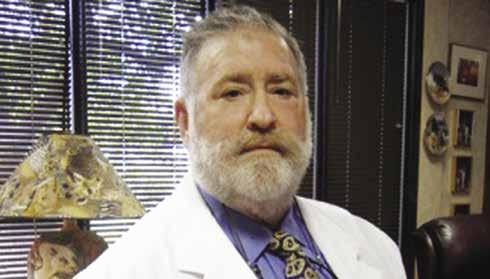

Dr. Birenbaum founded the Arlington Cancer Treatment Center in 1981. He founded the Texas Hematology/Oncology Center, PA in 1997. He is the founder, Medical Director, and CEO. Dr. Birenbaum trained at The University of Texas M.D. Anderson Cancer Institute for 5 years, 3 years as a Hematology/Oncology fellow and 2 years as a facility professor. His private practice in Hematology/Oncology has been in the Dallas/Fort Worth area since 1979. Dr. Birenbaum is available by cell phone 24/7 and participates in many support groups and radio programs.
AREAS OF CLINICAL INTEREST:
• Gastrointestinal Tumors
• Melanoma, Sarcoma
• Breast Cancer
• Lymphoma
• Kidney Cancer
EDUCATION AND TRAINING CREDENTIALS:
• Southern Methodist University
• Universidad Autonoma de Guadalajara/University of Michigan
• Straight Medical Internship - Henry Ford Hospital/University of Michigan
• Straight Medicine Residency - Tulane University Medical Center/Ochsner Clinic
• Fellowship Hematology/Oncology - University of Texas M.D. Anderson Hospital and Tumor Institute
• Private Practice 1979 to Present
PERSONAL INTERESTS:
• Born and raised in Dallas, TX
• Father of 2 sons
• Owns six dogs
• Loves traveling and golf
• Avid collector of arts and antiques
Dennis Birenbaum, MD and Dr. Wyszynski, MD, DO are M.D. Anderson trained hematologists/oncologists. Dr. Wyszynski, MD, DO also trained at Fox Chase Cancer Center
Dr. Wyszynski joins the Texas Hematology and Oncology Centers after many years of successful private medical practice in the Dallas/Fort Worth area. Dr. Wyszynski completed his internship and residency at John F. Kennedy Memorial Hospital in Stanford, New Jersey. He followed these with a number of Fellowships including one in Hematology/Oncology at the prestigious M.D. Anderson Cancer Center in Houston, TX, and two years at Fox Chase Cancer Center in Philadelphia, PA. Dr. Wysznski is well known for his quality of care and the personal interest he takes in his patients. He is very active in many professional societies and investigative trials.
BOARD CERTIFICATIONS:
• American Osteopathic Board of Internal Medicine: Hematology/
• Oncology-Certified: 8/24/2007
• American Osteopathic Board of Internal Medicine
PROFESSIONAL SOCIETIES:
• American Osteopathic Association
• ASCO
• Texas Medical Association
• Dallas County Medical Association
CLINICAL CANCER INVESTIGATIVE TRIALS:
• Central Pennsylvania Oncology Group Protocal
• Eastern Cooperative Group
• Southwest Oncology Group
PERSONAL INTERESTS:
• Married and father of 2 children
• Enjoys traveling and spending time with family
• Active in many hobbies
Beauty might be in the eye of the beholder however, the key to beauty and a youthful appearance can be in the hands of a skilled cosmetic surgeon who specializes in treating the eyes and areas around the eyes.
If fine lines, wrinkles, sun damage, droopy eyelids, bags under the eyes or sagging brows are getting you down, come visit with Key-Whitman Eye Center’s oculofacial plastic surgeon Priya Kalyam. Meeting with her may be just what you need.
Why choose an oculoplastic surgeon for helping you look younger?
When we’re looking at someone’s face, our gaze naturally gravitates toward the other person’s eyes first, so when the signs of aging appear on the face, people notice.
The periorbital area of the face is one of the first places the signs of aging show up. The periorbital areas include your forehead, eyelids, areas near the eyelids, as well as your eye socket and rims.
According to Dr. Kalyam, “If you rely on a plastic surgeon who specializes in treating the unique and complex anatomy of the eye, your results are typically going to be much more optimized in his or her hands than those of a physician who doesn’t specialize in that area.”
To perfect her craft, Dr. Kalyam spent six years carefully studying the anatomy of the eye and periorbital areas. This included full two years of surgical training during her oculoplastics fellowship at the esteemed Washington University in St. Louis, Missouri.
Dr. Kalyam recently joined Key-Whitman and is excited to offer patients a variety of anti-aging treatments—from minimally-invasive cosmetic procedures like cosmetic injections (Botox, fillers), laser resurfacing and chemical peels to surgical procedures, including eyelid lifts, under-eye bag correction, eyebrow lifts, mid-face lifts and others.
Want to explore your options for rejuvenating your look?
If you live in the Dallas-Fort Worth Metroplex and would like to learn more about anti-aging treatments and procedures, Key-Whitman Eye Center invites you to have a conversation with Dr. Kalyam at her relaxing, spa-like clinic inside Key-Whitman’s main Dallas location.

BELOW ARE THE TOP 5 FACIAL AGING CULPRITS AND HOW TO ADDRESS THEM:
WRINKLES. The solution? Neurotoxins like Botox.
If you have wrinkles on your forehead, crow’s feet around the eyes or deep vertical lines between your brows that are aging you beyond your years, you are not alone. “Wrinkles are definitely the most common complaint I hear from patients. Injecting Botox in or near those areas creates a smooth appearance and also gives a refreshing look around the eyes,” Dr. Kalyam says.
SUN-DAMAGED SKIN AND FINE LINES. The solution? Laser resurfacing, chemical peels and more.
According to Dr. Kalyam, “Here in Texas a lot of people experience sun damage. Unfortunately, sun damage can really age the skin. Depending on the patient, we may treat sun damage on the face with CO2 laser resurfacing, chemical peels, skin care solutions and facial creams.”
SAGGING FACIAL SKIN. The solution? Fillers like JUVEDERM, Voluma and others.
You don’t have to have wrinkles to look older. As Dr. Kalyam explains, “People can still appear aged if they don’t have wrinkles, especially if they have volume loss near the eyes, cheeks or lips. Depending on the area of concern, we can inject fillers, typically composed of collagen or hyaluronic acid, to provide volume.”
ACNE AND ACNE SCARS. The solution? Laser resurfacing, fillers and chemical peels.
Acne and acne scars can make one’s face look older and tired. For smoother and more vibrant skin, Dr. Kalyam may recommend laser resurfacing, fillers or chemical peels.
#5
SAGGING EYELIDS AND BROWS, BAGS UNDER THE EYES. The solution? Surgery. “Sagging eyelids, brows and bags can definitely age your face. To address these issues, we perform surgical eyelid lifts, brow lifts and surgery to address lower eyelid bags. These are by far the most common oculoplastic surgical procedures I perform. Surgery takes place at our state-of-the-art surgery center at Key-Whitman’s Dallas headquarters, where my office is located,” says Dr. Kalyam.


About Dr. Pfeiffer:

Leslie Pfeiffer, MD is board certified by the American Board of Ophthalmology and is a member of the American Society of Ophthalmic Plastic and Reconstructive Surgery, American Academy of Ophthalmology, the Texas Ophthalmology Association and the medical honor society, Alpha Omega Alpha. Dr. Pfeiffer is not only experienced in all areas of General Ophthalmology, but also has advanced training in eyelid, orbit, tear duct system and facial cosmetic and reconstructive surgery. She earned her Doctor of Medicine at the University of Texas Medical School at Houston, where she was honored as the most outstanding student in her specialty. She was also voted “Outstanding Resident” by her fellow residents at the Ruiz Department of Ophthalmology and Visual Science at The University of Texas Medical School at Houston. She then completed a full two years of surgical training at the largest oculoplastics-only private practice in Los Angeles, Eyesthetica, and the University of Southern California Roski Eye Institute.
A few of Dr. Pfeiffer’s many honors and awards include Outstanding Resident, and Champion of the Quarter for excellence in patient care and advocacy. She is an alumna of Duke University and speaks Spanish as a second language. When she isn’t treating patients, she enjoys skiing, cycling, rock climbing, and hiking.

• Comprehensive Adult Eye Care
• Light Adjustable Lens, Synergy™, Symfony®, PanOptix, Vivity®, and the Toric IOL
• Management of Glaucoma & Corneal Disease
• Eyelid Surgery & Botox®
• Laser Vision Correction
Give us a call today 214-220-3937 or Toll-Free 800-442-5330 www.keywhitman.com
Convenient locations to serve you in Dallas, Plano, Mesquite, Frisco, Arlington, Rockwall and North Fort Worth.
Follow us on (username: ketywhitman)

Our team of specialists uses an advanced clinical approach, including hyperbaric oxygen therapy, to reduce your healing time.
Working together with your healthcare provider, our trained staff will get you back to living your daily life.
MEET OUR PHYSICIAN PANEL
Dr. Edward Tomoye
Infectious Disease/HBO/Wound Care
Dr. Minaxi Rathod
Infectious Disease/HBO/Wound Care
Dr. Jennifer Laing
Family Practitioner/HBO/Wound Care
Dr. Dustin Lloyd
Podiatry/HBO/Wound Care
WE TREAT ALL WOUNDS INCLUDING, BUT NOT LIMITED TO:
• Diabetic foot ulcers
• Venous ulcers
• Pressure ulcers
• Surgical wounds
• Traumatic wounds
• Arterial ulcers
• Late effects of radiation treatments
• Compromised skin grafts and flaps
• Crush injuries
CHOOSE WILSON N. JONES
If you have a wound or an ulcer that is not healing, or any wound that is of concern, ask your physician for a referral to the wound center or contact us directly for an appointment.
891-2139